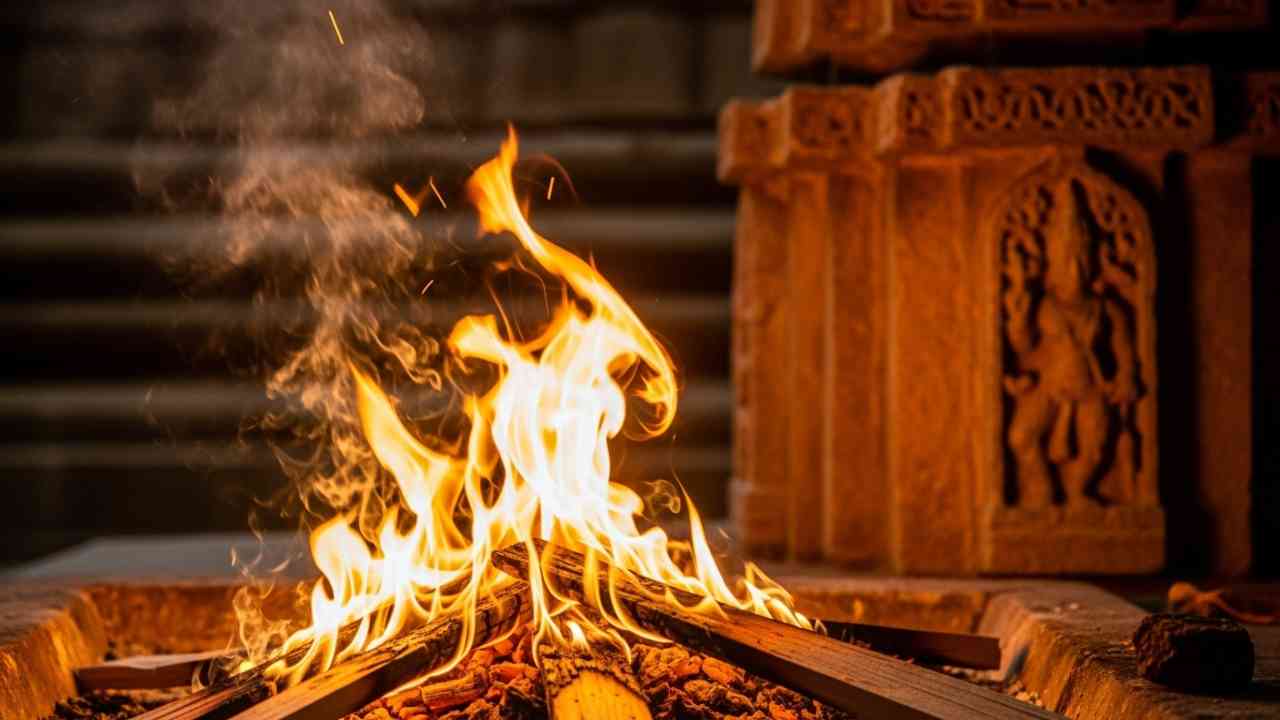
Rituals are more than ceremonial acts, they are bridges between the human and the divine, the visible and the invisible. Among them, the significance of yagya shines brilliantly in Hindu tradition. Derived from the Sanskrit root “yaj”, meaning to worship or sacrifice, a yagya (also spelled yagna or yajna) is a fire ritual, an offering, a prayer, and a transformative act all rolled into one.
In this expansive article, we will explore the significance of yagya across spiritual, social, psychological and environmental realms. We’ll delve into why it matters, how it works, and what it can teach us today. Whether you’re curious about the symbolism, the benefits, or how to engage meaningfully, this guide provides a comprehensive view.
1. Understanding What Yagya Actually Means
At its core, the significance of yagya lies in the idea of “offering.” In Vedic literature a yagya was originally a literal sacrifice, a fire altar, offerings of ghee, milk, grains, and sometimes animals. The fire (Agni) served as the messenger between human beings and the gods.
Over time the ritual evolved. Yagya came to mean not only fire sacrifices but also internal sacrifices, letting go of ego, offering one’s actions for a higher purpose. One definition states that yagya is “a combination of traditional Vedic rituals performed for getting nature support in a particular direction.”
From the smallest domestic havan (fire ritual) to grand-scale yajnas involving kings and sages. The significance of yagya is about communion, transformation and alignment with self, society, nature, and the divine.
2. The Spiritual & Cosmic Significance of Yagya
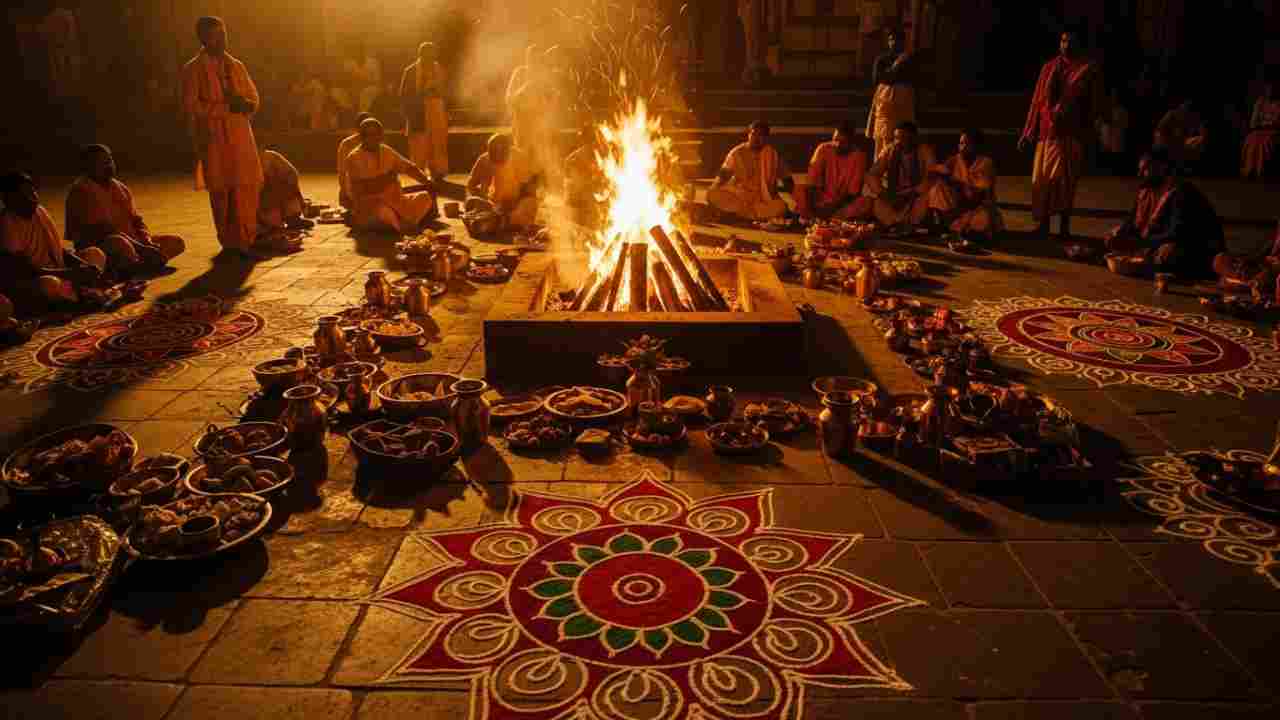
2.1 Connecting with the Divine
The significance of yagya lies first and foremost in its ability to connect the devotee with the divine. In performing a yagya one offers something like ghee, grains, herbs into the fire while chanting mantras. The fire symbolizes the divine flame, Agni, who carries the offerings upward.
This act is not only transactional (offer and receive) but deeply relational. It invites surrender, devotion, and humility. The Bhagavad Gita talks about performing actions as a yagyais offering the results to the divine thus turning routine life into sacred life.
2.2 Preserving Cosmic Order
The significance of yagya also lies in maintaining cosmic order (Dharma). In Vedic thought the universe is sustained by acts of order, sacrifice and balance. Yagya is one of those acts: the gods are nourished, the elements are given due respect, the human realm aligns with cosmic rhythms.
When a king conducted a great yajna, for example, it was believed that the welfare of the kingdom was tied to its success. The ritual was a microcosm of cosmic sacrifice.
2.3 Purification of the Self
Another layer of the significance of yagya is purification. Participating in or sponsoring a yagya is said to cleanse the mind, rid one of karmic debt, and elevate one’s consciousness. The ritual fire burns the residue of ego, attachments and ignorance.
One article states: “Through fire, offerings, and intricate rituals, yagya allows humans to connect with the divine, purify themselves, and contribute to the ongoing balance of the cosmos.”
2.4 Fulfilment of Spiritual Duty
Lastly, the significance of yagya includes the fulfilment of one’s spiritual duties. In Vedic ethics, part of the human role is to give, to offer, to sacrifice. Yagya is the formalised way to live out that role. Whether it’s offering food to Agni in the morning (Agnihotra) or sponsoring a large-scale yajna, it is an expression of duty, devotion, and discipline.
3. The Social & Personal Significance of Yagya
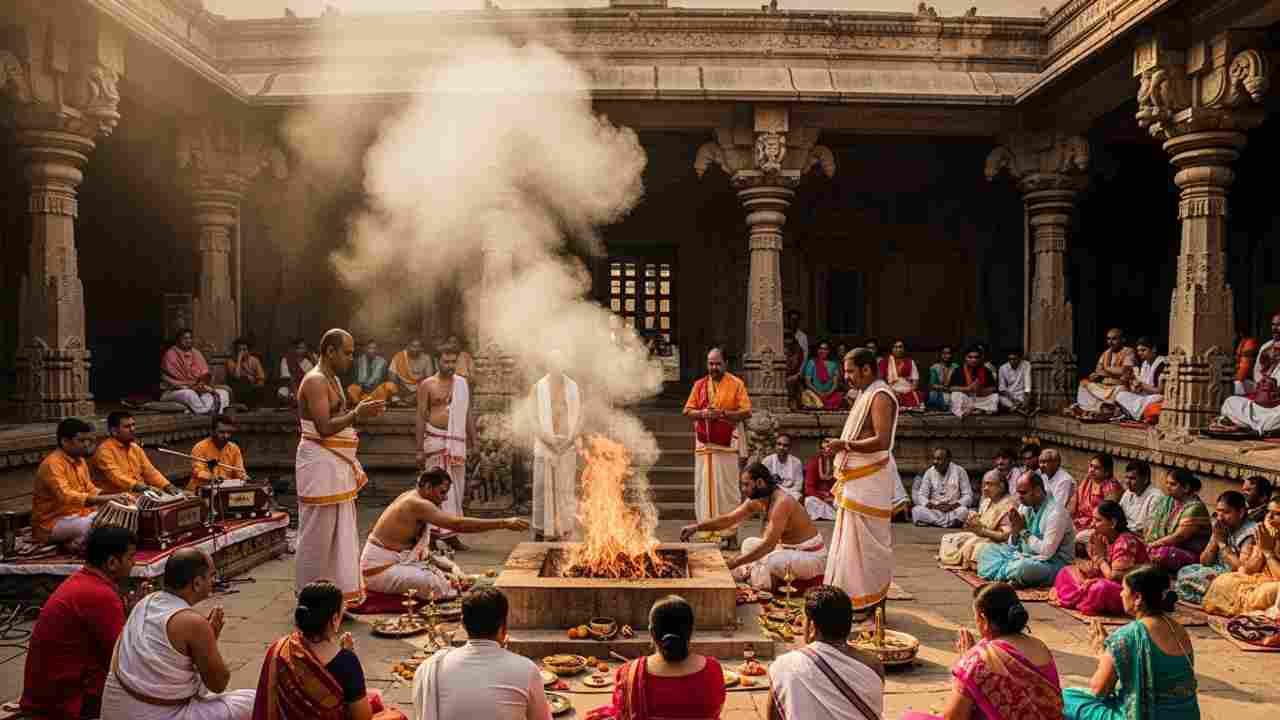
3.1 Bringing Peace and Prosperity
The significance of yagya extends into the social sphere. Communities come together to perform yajnas, people share prasad (sacred food), and the outcome is believed to be peace, prosperity, health and harmony. The idea is simple: when humans align with cosmic rhythm, society flourishes.
3.2 Purification of Mind and Atmosphere
On a more immediate level the significance of yagya is in purification. The smoke of the yagya, the chanting of mantras, the focused attention all combine to clear the mind and the surroundings. Studies and practitioners note that the vibrations created by mantra recitation and the aroma of sacred herbs can reduce stress, anxiety, and negative emotions.
3.3 Reducing Negativity and Fostering Generosity
Yagya encourages an attitude of self-less giving. In offering into the fire one symbolically relinquishes something. That act reduces greed, attachment and ego. The significance of yagya lies in its subtle prompting of generosity, community spirit and inner calm.
3.4 Marking Life’s Milestones
In personal life the significance of yagya appears at key moments. In births, weddings, house-warmings, naming ceremonies. A yagya marks the transition, sanctifies the moment and invites blessings for the future.
4. The Physical, Scientific & Environmental Significance of Yagya
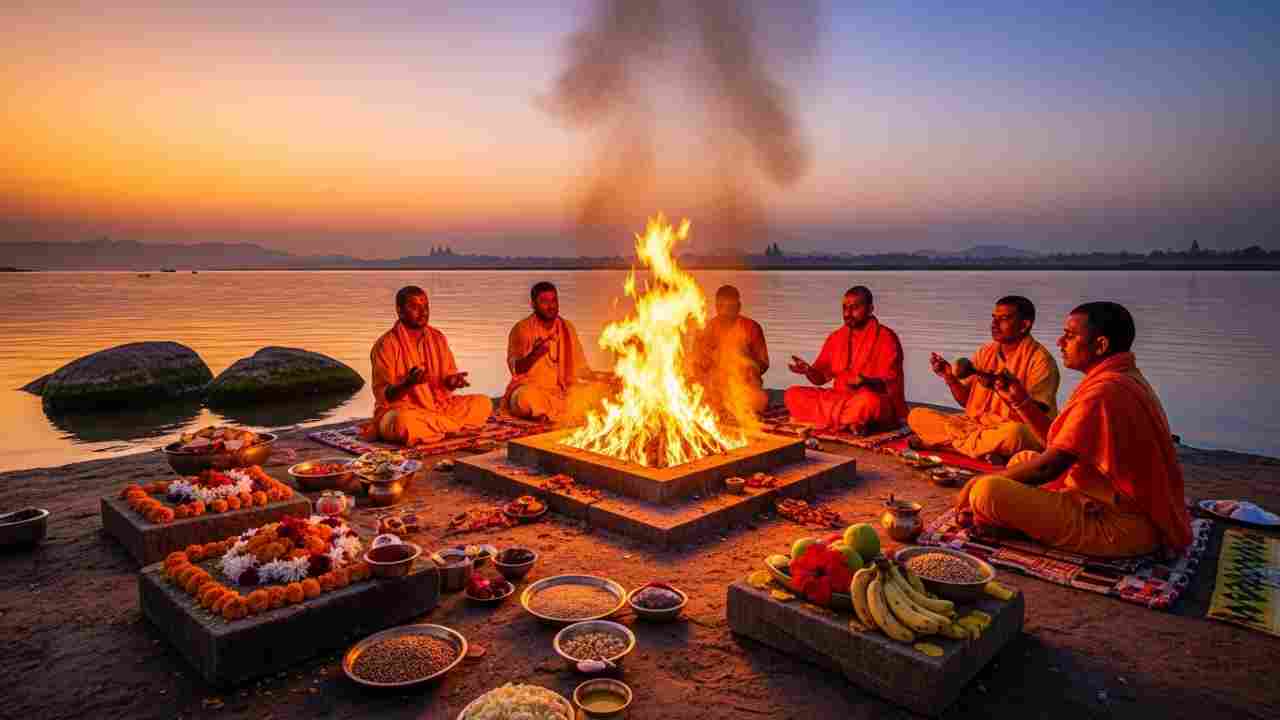
4.1 Promoting a Healthy Environment
From a modern perspective the significance of yagya extends into environment and ecology. Traditional yagya fires use specific woods, herbs and ghee; the resultant smoke and aroma serve to purify the air, drive away insects and produce a calming environment. Some suggest that compounds released have antibacterial properties.
4.2 Medicinal Benefits
The significance of yagya can also be found in the medicinal substances used in offerings. Many herbs used in yagya remedy traditions are known to have health benefits—improving respiratory function, influencing nervous system, calming the mind. The fusion of ritual and wellness is part of the deeper meaning.
4.3 Strengthening Mind and Body
Engaging in a yajna often requires discipline like early rise, precision in ritual steps, focus during mantra recitation. The significance of yagya in this context is that it cultivates physical stamina, mental clarity and a sense of rhythm in life. The ritual modality promotes holistic wellbeing.
4.4 Ecological Symbolism
Beyond the physical benefits the significance of yagya is in its symbolism of ecological balance. The fire, the offerings, the presence of multiple elements (fire, air, wood, herbs) reflect respect for natural forces. The ritual reminds us of our dependency on natural systems and invites gratitude and care.
5. Types and Contexts of Yagya: Exploring Variety
To fully appreciate the significance of yagya one must glimpse its many forms.
- Agnihotra: Daily early-morning fire ritual in many Vedic households, its in small scale but profound.
- Deva Yagya: Sacrifice to the gods, seeking their favour.
- Pitri Yagya: Rituals to honour ancestors, highlighting the significance of yagya in connecting generations.
- Bhoot or Bhuta Yagya: Offerings to the elemental and subtle life-forms emphasising the significance of yagya in ecological and inclusive vision.
- Svarga Yagya / Royal Yajnas: Grand historical sacrifices performed by kings reflecting the significance of yagya in governance, society and cosmic order.
- Jnana-Yagya / Yoga-Yagya: Internalised forms where knowledge, meditation and discipline become the offering very modern expressions of the significance of yagya.
6. The Symbolism Embedded in the Ritual
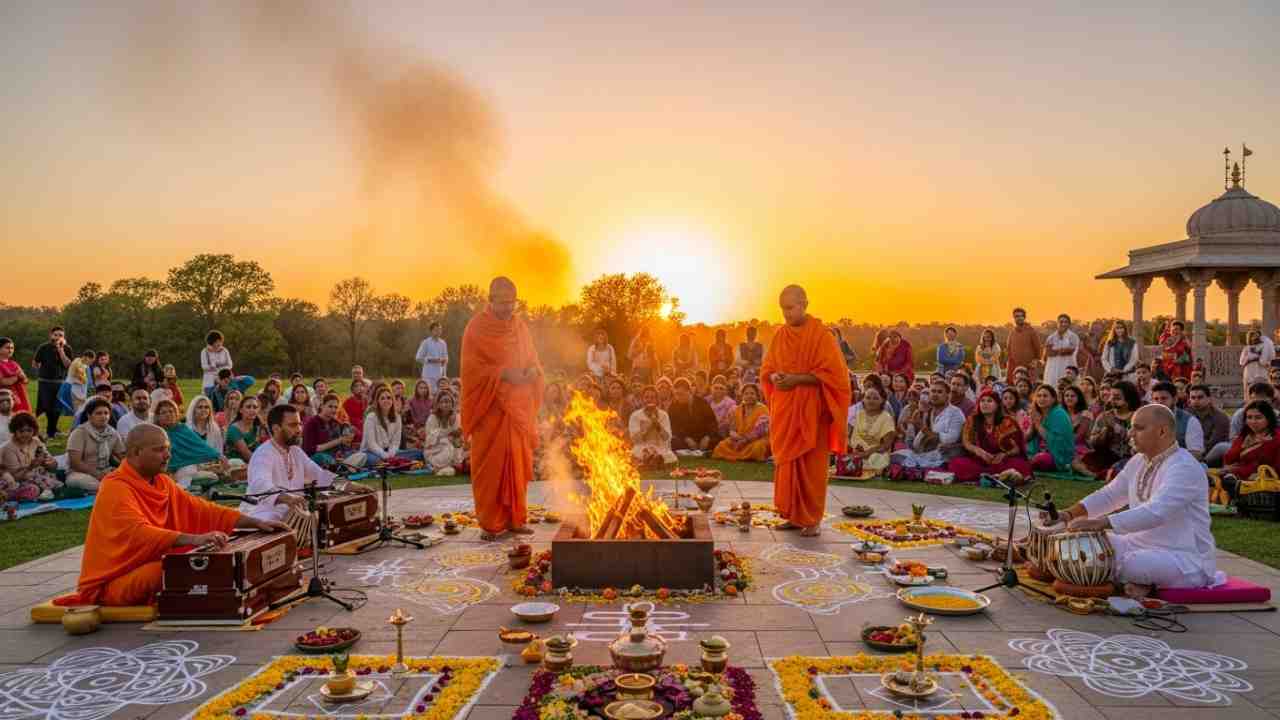
Understanding the significance of yagya also means decoding its rich symbolism.
- Fire (Agni): The bridge between worlds. It consumes, transforms and carries offerings. Symbol of inner fire, clarity and transformation.
- Altar (Vedi): The sacred space, often square, rooted in geometry. Signifies ordered cosmos and sacred architecture.
- Oblations: Ghee, grains, herbs represent the material world, human labour. Offering them symbolises surrender of ego and attachment.
- Mantras: Sound vibrations. The significance lies in how sound creates resonance within the individual and the environment.
- Community: Yajna is often public, communal. The significance is shared ritual, social bonding, collective psyche.
- Sacrifice: At root the significance of yagya is about giving, offering not only material items but self, intention, service.
7. How Yagya Connects with Karma and Spiritual Growth
In Hindu philosophy the significance of yagya embraces the concept of Karma. Our actions bind us; offering selflessly via yagya helps release bonds. The Bhagavad Gita emphasises performing action as yagya without attachment.
In this light yagya is not only a ritual but a spiritual technology. When we perform a yajna with sincerity the act becomes transformative. The significance of yagya is thus twofold: outward offering, and inward evolution.
8. Modern Relevance: Why Yagya Matters Today
How does the significance of yagya translate in the 21st century?
- Stress & Anxiety Relief: A yagya environment (steady fire, chanting, calm atmosphere) is naturally conducive to meditation and mental wellness.
- Community & Social Wellness: In fragmented societies the communal Yagya brings people together reminding us we are not alone.
- Environmental Awareness: The ritual’s respect for natural elements reminds us to treat nature with reverence is very relevant today.
- Spiritual Lifestyle: Even if one does not perform full-scale yajna, offering one’s day as a “yagya” (selfless service) echoes the same significance of yagya in everyday life.
- Global Interfaith Dialogue: Understanding yagya helps cross cultural dialogue. It is showing how ritual, fire, offering and community are universal themes.
9. Challenges and Myths Around Yagya
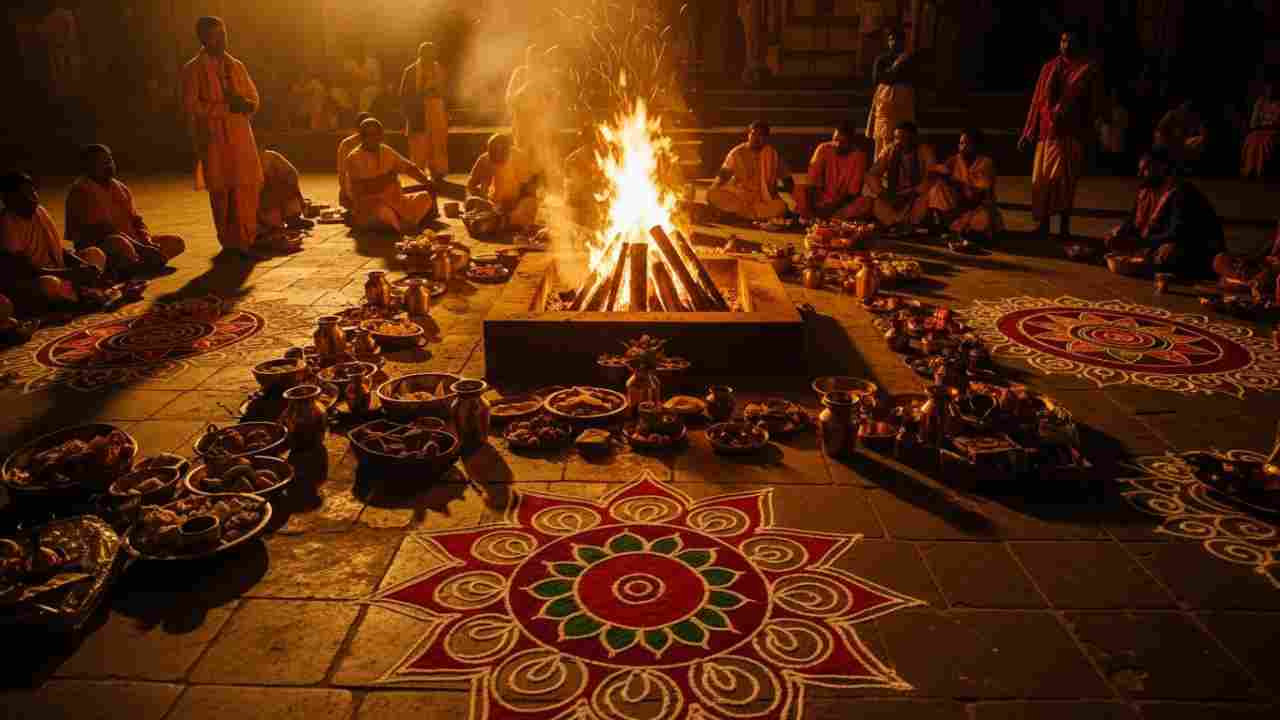
Like any ancient practice the significance of yagya can be misunderstood or misused.
- Misconception of Transactional Magic: Some reduce yagya to “if I perform then I will get wealth.” While benefits exist, the deeper significance lies in transformation, not mere gain.
- Environmental Misuse: In modern times indiscriminate burning or excessive offerings can harm. Understanding the principle behind yagya helps correct this.
- Social Exclusivity: Historically yajnas may have been restricted; but recognition of the broader inclusive meaning of yagya helps widen access.
- Mechanistic Ritualism: Performing the external form without inner intention can nullify the deeper significance of yagya, it becomes ritual without realization.
10. How to Integrate Yagya’s Significance into Daily Life
You don’t need a full altar or 10 priests to tap into the significance of yagya. Here are practical ways:
- Morning Fire Offering: Light a candle or small hearth, recite a short prayer and offer food or grains with sincerity.
- Service as Yagya: Serve someone without expecting reward. That act becomes a living yagya.
- Mindful Action: Perform your job, studies, chores as an offering, this internalises the significance.
- Community Gathering: Join or support a small havan or fire ritual; absorb the vibrations and community energy.
- Observe Nature: Treat rivers, trees, animals with respect, honour the “bhutas” (elemental beings). This echoes the significance of yagya in its ecological form.
11. Case Studies of Yagya in Scripture and Society
In the great epics and Puranas we see the significance of yagya vividly.
- In Mahabharata the Rajasuya yajna of Yudhishthira underscores the importance of cosmic order and kingly duty.
- The great Ashvamedha yajna demonstrates power, sacrifice and governance.
- In Upanishadic thinking the idea that the universe itself was created by sacrifice (“ayam yajno vishwasya bhuvanasya nabhi”) highlights how yajna is foundational to being.
- Modern temples performing daily agnihotra link the ancient rite to contemporary well-being and communal harmony.
So, the significance of yagya is multi-layered: it is spiritual communion, a cosmic stabiliser, a purifier of mind and environment, a social binder, a symbol of self-less service and sacrifice.
In modern times it still holds power and if we peel away the ritual from the essence we discover a beautiful truth: the act of offering our best, our awareness, our intention, even our actions, for a higher good is a yagya.
May you embrace this ancient wisdom. May you find your own form of yagya. It can be offering, service, ritual, consciousness. Which brings clarity, balance and connection to your life and your world.
FAQs
1. What is the basic meaning of yagya?
Yagya means an act of worship, offering or sacrifice typically performed before a sacred fire while chanting mantras.
2. Why is the fire (Agni) central to a yagya?
Fire is the messenger between humans and gods in Vedic tradition. It carries offerings upward and symbolises transformation and purification.
3. Can anyone perform a yagya, or is it restricted?
Traditionally priests guided public yajnas, but the fundamental principle of offering applies to all. With proper intent and guidance anyone can engage in a yagya-like act.
4. How does yagya benefit the environment or mind in modern times?
The ritual smoke, the calm atmosphere, mantra chanting and communal rhythm help reduce stress, purify air, promote mental clarity and strengthen community bonds.
5. What is the connection between yagya and karma?
Yagya involves offering one’s actions, results and attachments to the divine. This aligns with the idea of doing without attachment, thereby reducing karmic binding and promoting spiritual growth.
6. Do we always need a fire to perform yagya?
While traditional yajnas use fire, the essence of offering and self-sacrifice is key. Symbolic offerings, meditation or acts of service can embody the significance of yagya.
7. Is yagya only for spiritual goals?
No. Yagya covers spiritual, material and social goals. It can be performed for prosperity, health, removal of obstacles, ancestral peace, cosmic balance and more.
8. How has yagya evolved in the modern era?
Yagya has shifted from grand Vedic sacrifices to more accessible forms of household havans, community fire rituals, internalised yoga or service. The core significance remains.
9. What are common items used in a yagya?
Traditionally items include ghee, grains, herbs, wood of specific trees, mantra recitation and often a purified altar. Each element carries symbolic meaning.
10. How can I incorporate the significance of yagya into daily life?
Offer your work, relationships and intentions as a sacrificial act. Practice service, mindfulness, gratitude and community connection. Light a daily candle or perform a few minutes of mantra offering, small yet meaningful steps embody the significance of yagya.

